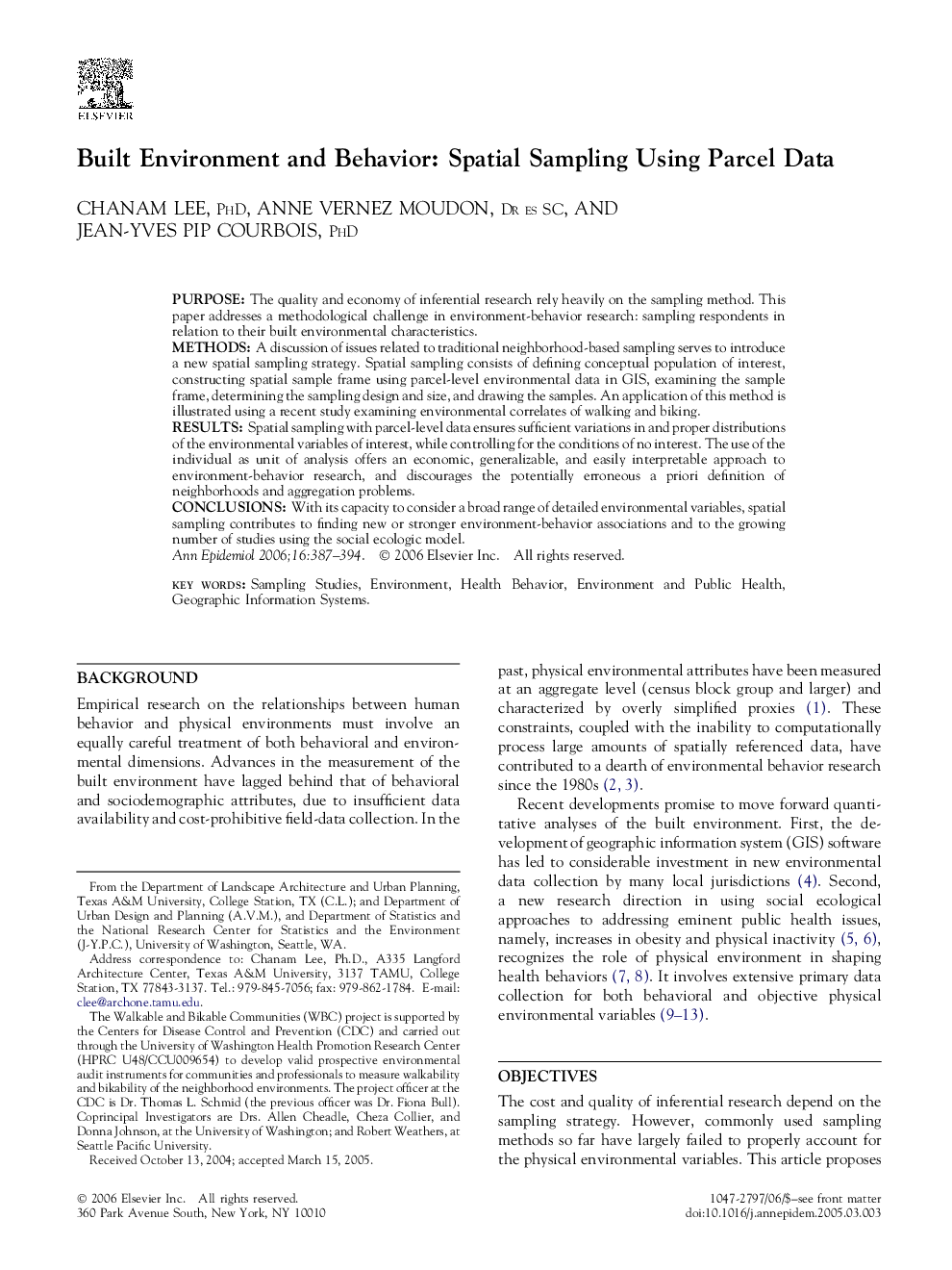| Article ID | Journal | Published Year | Pages | File Type |
|---|---|---|---|---|
| 3445891 | Annals of Epidemiology | 2006 | 8 Pages |
PurposeThe quality and economy of inferential research rely heavily on the sampling method. This paper addresses a methodological challenge in environment-behavior research: sampling respondents in relation to their built environmental characteristics.MethodsA discussion of issues related to traditional neighborhood-based sampling serves to introduce a new spatial sampling strategy. Spatial sampling consists of defining conceptual population of interest, constructing spatial sample frame using parcel-level environmental data in GIS, examining the sample frame, determining the sampling design and size, and drawing the samples. An application of this method is illustrated using a recent study examining environmental correlates of walking and biking.ResultsSpatial sampling with parcel-level data ensures sufficient variations in and proper distributions of the environmental variables of interest, while controlling for the conditions of no interest. The use of the individual as unit of analysis offers an economic, generalizable, and easily interpretable approach to environment-behavior research, and discourages the potentially erroneous a priori definition of neighborhoods and aggregation problems.ConclusionsWith its capacity to consider a broad range of detailed environmental variables, spatial sampling contributes to finding new or stronger environment-behavior associations and to the growing number of studies using the social ecologic model.
